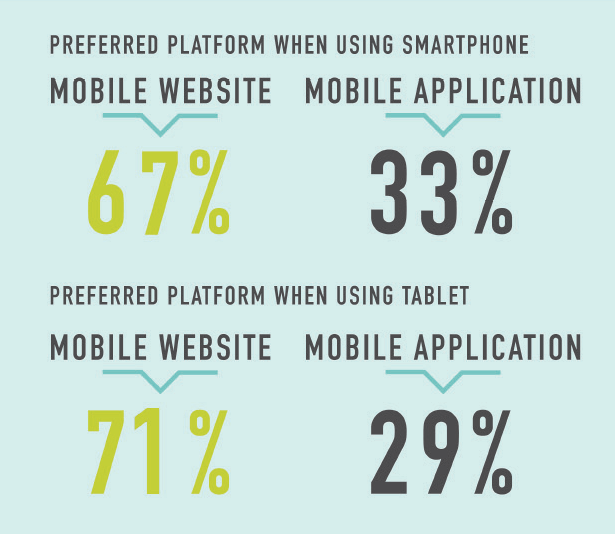Study: Consumers Increasingly Turn To Mobile & Varied Media Combinations In Last Mile
If you thought people started their shopping on mobile then turned to their laptop or desktop to close the sale, you're mistaken. How consumers are negotiating the last mile of the purchase process.
As we head into the end-of-year planning season, local advertisers should consider two key consumer trends driving today’s Last Mile Advertising landscape: (1) continued growth in mobile usage, and (2) differences in choice of local media for different business categories.
Today, the Local Search Association released an infographic based on 2013 statistics from our annual “Local Media Tracking Study,” conducted by Burke, Inc., which provides key insights into the reach of various local media sources across computer/laptop, mobile phone/smartphone and netbook/tablet.
The study includes interviews with 8,000 U.S. adults conducted online and by phone. The infographic highlights data that shows that consumers continue to increasingly turn to mobile devices when seeking, discovering or considering local business information.
The results also demonstrate that consumers rely on a variety of different combinations of local media to inform their local purchasing decisions, depending on the business category they are evaluating. So what do these two trends mean for local advertisers, and how should they adapt their marketing strategies to adapt?
1. No Matter How You Advertise Locally, Get In Line In The March To Mobile
The survey shows that consumers are increasingly searching the internet for local business information via mobile phone/smartphone and netbook/tablet – at the expense of desktop/laptop.
Between 2012 and 2013, computer/laptop usage for searching for local products and services dropped from 80% to 73%, while mobile phone/smartphone usage increased from 25% to 34% and netbook/tablet usage rose from 6% to 11%. This shift is universal across the three segments of Last Mile Advertising.
Whether using search engines, internet yellow pages, daily deals or ratings/review sites, consumers are more often pulling out their phone or tablet than sitting down at their desktop. With each media, the year-over-year changes in how consumers are searching for local products and services are substantial. For example, with search engines alone, mobile phone/smartphone usage rose from 25% to 34% between 2012 and 2013.
The survey found that the growing preference for mobile phone/smartphone and netbook/tablet as platforms for searching for local products and services is driving these changes.
Some local advertisers may point out that while more consumers are using mobile phones/smartphones and netbooks/tablets to conduct searches in the Last Mile, desktop/laptop usage still represents a strong majority in each measured category.
While that’s true, it is also worth pointing out that consumers using mobile phones and tablets to search for local products and services are more likely to follow through with a purchase than those using PCs and laptops, according to recent comScore research presented at LSA’s annual conference in April.
In fact, nearly 8 out of 10 mobile phone searches for local business information result in a purchase.
Key Takeaways:
- In each of the three segments of Last Mile Advertising, consumers are increasingly using mobile phones/smartphones and netbooks/tablets at the expense of desktop/laptops. Moving forward, local advertisers should not only adjust their marketing spends to match current usage, but invest further in anticipation of future usage. Local advertisers should think about tomorrow and the advantages of having their mobile strategies in place ahead of their competitors.
- With mobile users more likely than desktop users to follow through with a purchase, local businesses must have the tools in place to capture and convert transactions – or they will lose leads to their competitors.
- When considering their mobile presence, local advertisers should take note of consumers’ preference for mobile websites over mobile apps: approximately 7 in 10 consumers prefer mobile websites over mobile apps when using either a smartphone or tablet. This underscores the importance of ensuring that local businesses build mobile-friendly websites that consumers can easily access.
2. Leverage The Most Effective Set Of Local Media For Your Business
As the Last Mile Advertising space continues to fragment, consumers are referencing a wider range of local media before purchasing products or services.

As the chart above shows, the variations in local media use by category can be significant and may not be in line with the overall local media totals cited earlier.
For example, consumers leverage print Yellow Pages for business categories including physicians, dentists, auto parts, attorneys, auto repair and appliance repair with frequency that is comparable to or even greater than search engines.
As another example, consumers referencing the supermarket category are much more likely to turn to store circulars, email promotions and coupons than search engines. These examples exist despite overall numbers showing significantly higher consumer usage for search engines over all other types of local media.
Key Takeaways:
- The local media environment is extremely diverse, with consumers referencing a variety of traditional and digital platforms across the Last Mile spectrum.
- Despite overall trends in local media usage, local businesses must develop integrated advertising strategies that include local media most applicable to their business category. While consumers may favor a daily deal with one type of business, they may be more attracted to social media or ratings and review sites when considering another.
To summarize the results of the above study, marketers must be strategic in evaluating how their business can best succeed in our fast-changing and nuanced Last Mile environment as they plan their local advertising strategy to round out the year.
Contributing authors are invited to create content for Search Engine Land and are chosen for their expertise and contribution to the search community. Our contributors work under the oversight of the editorial staff and contributions are checked for quality and relevance to our readers. The opinions they express are their own.
Related stories
New on Search Engine Land






